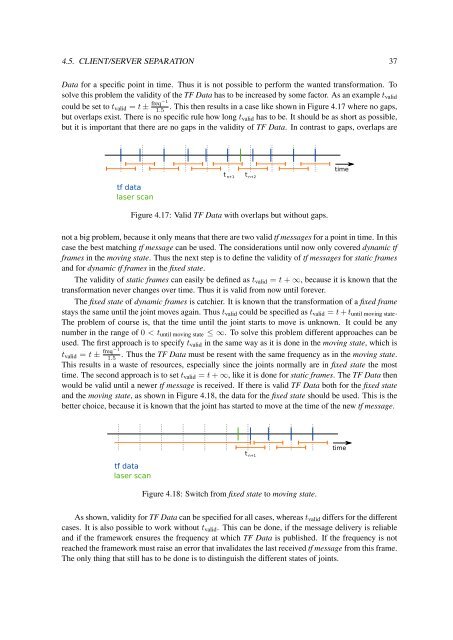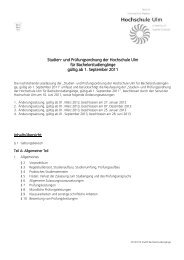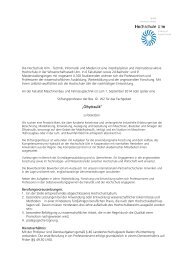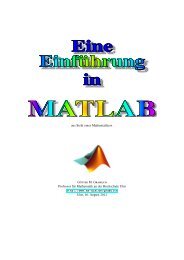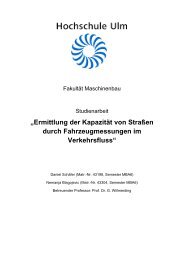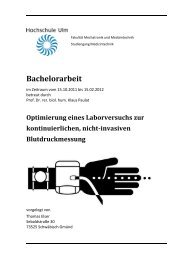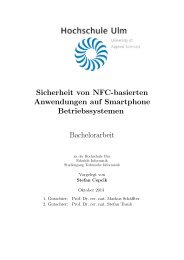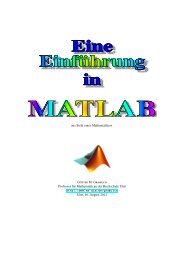PDF 1.938kB
PDF 1.938kB
PDF 1.938kB
Create successful ePaper yourself
Turn your PDF publications into a flip-book with our unique Google optimized e-Paper software.
4.5. CLIENT/SERVER SEPARATION 37<br />
Data for a specific point in time. Thus it is not possible to perform the wanted transformation. To<br />
solve this problem the validity of the TF Data has to be increased by some factor. As an example t valid<br />
could be set to t valid = t ± freq−1<br />
1.5<br />
. This then results in a case like shown in Figure 4.17 where no gaps,<br />
but overlaps exist. There is no specific rule how long t valid has to be. It should be as short as possible,<br />
but it is important that there are no gaps in the validity of TF Data. In contrast to gaps, overlaps are<br />
tf data<br />
laser scan<br />
t n+1<br />
t n+2<br />
time<br />
Figure 4.17: Valid TF Data with overlaps but without gaps.<br />
not a big problem, because it only means that there are two valid tf messages for a point in time. In this<br />
case the best matching tf message can be used. The considerations until now only covered dynamic tf<br />
frames in the moving state. Thus the next step is to define the validity of tf messages for static frames<br />
and for dynamic tf frames in the fixed state.<br />
The validity of static frames can easily be defined as t valid = t + ∞, because it is known that the<br />
transformation never changes over time. Thus it is valid from now until forever.<br />
The fixed state of dynamic frames is catchier. It is known that the transformation of a fixed frame<br />
stays the same until the joint moves again. Thus t valid could be specified as t valid = t + t until moving state .<br />
The problem of course is, that the time until the joint starts to move is unknown. It could be any<br />
number in the range of 0 < t until moving state ≤ ∞. To solve this problem different approaches can be<br />
used. The first approach is to specify t valid in the same way as it is done in the moving state, which is<br />
t valid = t ± freq−1<br />
1.5<br />
. Thus the TF Data must be resent with the same frequency as in the moving state.<br />
This results in a waste of resources, especially since the joints normally are in fixed state the most<br />
time. The second approach is to set t valid = t + ∞, like it is done for static frames. The TF Data then<br />
would be valid until a newer tf message is received. If there is valid TF Data both for the fixed state<br />
and the moving state, as shown in Figure 4.18, the data for the fixed state should be used. This is the<br />
better choice, because it is known that the joint has started to move at the time of the new tf message.<br />
t n+1<br />
time<br />
tf data<br />
laser scan<br />
Figure 4.18: Switch from fixed state to moving state.<br />
As shown, validity for TF Data can be specified for all cases, whereas t valid differs for the different<br />
cases. It is also possible to work without t valid . This can be done, if the message delivery is reliable<br />
and if the framework ensures the frequency at which TF Data is published. If the frequency is not<br />
reached the framework must raise an error that invalidates the last received tf message from this frame.<br />
The only thing that still has to be done is to distinguish the different states of joints.


